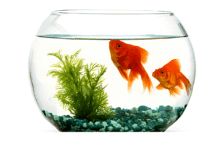
Toxic Plants for Pets in Mississippi: What’s Growing in Your Yard
Toxic plants for pets lurk in Mississippi yards Learn which common plants endanger dogs/cats and discover pet-safe landscaping alternatives.
Toxic plants for pets are a hidden danger lurking in many Mississippi yards, putting curious dogs and cats at risk of poisoning. The state’s warm, humid climate allows a wide variety of lush vegetation to thrive including many common ornamental plants that can be deadly if ingested by animals. From vibrant flowers to hardy shrubs, some of the most attractive landscaping choices contain toxins that can cause anything from mild stomach upset to organ failure or even death in pets. As responsible pet owners, it’s crucial to recognize these hazardous plants and take steps to protect our furry companions.
In this guide, we’ll explore the most dangerous toxic plants for pets found in Mississippi, their effects on animals, and how to create a safer outdoor environment. Whether you’re planning a new garden or simply want to assess your existing landscape, understanding these risks can help prevent emergencies and keep your pets healthy. By learning to identify hazardous species and opting for pet-friendly alternatives, you can enjoy Mississippi’s natural beauty without compromising your pet’s safety.
Toxic Plants for Pets in Mississippi and What’s Growing in Your Yard?
Common Toxic Plants in Mississippi Yards
Mississippi’s rich soil and humid climate support a wide variety of flora, but some of the most attractive plants can be deadly to pets. Below are some of the most hazardous ones to watch out for:
Sago Palm
The Sago Palm is a popular ornamental plant in Southern landscapes, but it’s extremely toxic to dogs and cats. All parts of the plant, especially the seeds, contain cycasin, a toxin that causes liver failure. Symptoms of poisoning include vomiting, diarrhea, lethargy, seizures, and Toxic Plants death if not treated immediately.
Oleander
Oleander is a hardy, drought-resistant shrub with beautiful pink or white flowers, but it contains cardiac glycosides, which affect the heart. Ingesting even a small amount can lead to drooling, vomiting, irregular heartbeat, and potentially fatal Toxic Plants arrest.
Azaleas & Rhododendrons
These flowering shrubs are common in Mississippi gardens but contain grayanotoxins, which disrupt sodium channels in cells. Pets that chew on azalea leaves may Toxic Plants drooling, vomiting, weakness, and in severe cases, coma or death.
Lantana
Lantana’s bright, clustered flowers make it a favorite in Southern gardens, but its berries contain triterpenoids, which cause liver damage. Symptoms include vomiting, diarrhea, weakness, and photosensitivity (skin irritation when exposed to sunlight).
Castor Bean
This fast-growing plant produces ricin, one of the most Toxic Plants natural toxins. Just a few seeds can be fatal to a dog or cat, causing severe vomiting, dehydration, seizures, and organ failure.
Autumn Crocus
Often mistaken for spring crocuses, the autumn crocus contains colchicine, which leads to severe gastrointestinal distress, kidney and liver damage, and Toxic Plants failure. While lilies are especially dangerous to cats, causing acute kidney failure, some varieties can also harm dogs. Even small amounts of pollen or leaves can trigger vomiting, lethargy, and fatal kidney damage.
Hydrangeas
Hydrangeas’ vibrant blooms contain cyanogenic glycosides that convert to cyanide when crushed by chewing, posing a serious risk to pets who mouth the leaves or flowers. Within 30 minutes of ingestion, affected animals typically show bright red gums, difficulty breathing, and neurological signs like dizziness or collapse alongside gastrointestinal disease.
Daffodils
The highest concentration of toxic lycorine resides in daffodil bulbs, which can trigger violent gastrointestinal distress and dangerous heart irregularities if dug up and eaten by pets. Even small ingestions may cause profuse vomiting, painful abdominal contractions, and potentially life-threatening changes in heart rhythm, particularly in smaller animals.
English Ivy
The glossy leaves of English Ivy contain triterpenoid saponins that irritate pets’ digestive systems, causing painful symptoms within hours of ingestion. Even small amounts can trigger Toxic Plants drooling, violent vomiting, and severe abdominal cramping in both dogs and cats.
Symptoms of Plant Poisoning in Pets
If your pet has ingested a toxic plant, symptoms may appear within minutes or take several hours. Common signs include Excessive drooling. Vomiting or diarrhea. Lethargy or weakness. Difficulty breathing. Tremors or seizures. Loss of appetite. Irregular heartbeat. If you notice any of these symptoms, contact your veterinarian or the ASPCA Animal Poison Control Center (888-426-4435) immediately. Quick action can save your pet’s life.
How to Protect Your Pets from Toxic Plants
Identify and Remove Hazardous Plants
Start by carefully identifying and removing hazardous plants like sago palms, oleander, or lilies from your pet’s environment. Then fill those Toxic Plants with cheerful, non-toxic options such as vibrant marigolds, towering sunflowers, or fragrant rosemary bushes that add beauty without risking your pet’s health.
Supervise Outdoor Time
Keep a watchful eye on your pets during outdoor time, as even supervised animals can quickly nibble on dangerous foliage. Consider using baby gates or creating designated play areas away from toxic plants if your pet is particularly curious or prone to chewing.
Train Pets to Avoid Plants
Stay within arm’s reach of your pets when they’re near garden areas, ready to redirect them from suspicious plants. For chronic chewers, consider fitting them with a lightweight basket muzzle during outdoor time while you work on training alternatives.
Use Barriers or Fencing
Install decorative wrought iron or wooden fencing around toxic shrubs like azaleas or hydrangeas to create a physical barrier while maintaining your Toxic Plants aesthetic. For smaller toxic plants, elevate them in tall planters or hanging baskets that place them completely out of your pet’s reach.
Keep Emergency Contacts Handy
Program your veterinarian’s contact number and the ASPCA Animal Poison Control Center (888-426-4435) into your phone’s speed dial for instant access during emergencies. Keep these numbers visibly posted on your refrigerator and saved in your pet’s first aid kit as well.
Pet-Safe Alternatives for Mississippi Gardens
If you want a beautiful yard without the risk, consider these non-toxic plants Magnolias (native and safe). Creeping Thyme (ground cover). Spider Plants (indoor/outdoor safe). Boston Ferns (pet-friendly greenery). African Toxic Plants (colorful and harmless).
Read More: How to Choose the Best Vet for Your Pet in Texas: A Complete Guide
Conclusion
Toxic plants for pets pose a serious but often overlooked threat in Mississippi’s lush landscapes. From the deadly Sago Palm to the beautiful yet dangerous Oleander, many common yard plants can have devastating consequences if ingested by curious pets. By learning to identify these hazardous species and understanding their effects, pet owners can take proactive steps to create a safer outdoor environment. Regular yard inspections, pet-proof landscaping, and immediate veterinary attention in case of exposure are all crucial measures in protecting our four-legged family members.
As you enjoy Mississippi’s natural beauty, remember that prevention is the best defense against plant-related pet poisoning. Replace high-risk plants with pet-friendly alternatives, supervise outdoor playtime, and keep emergency vet contacts readily available. With proper awareness and precautions, you can maintain a vibrant, thriving yard while ensuring it remains a safe haven for your pets. By staying vigilant about toxic plants for pets, you’re not just cultivating a beautiful garden you’re nurturing the health and happiness of your beloved animal companions for years to come.
FAQs
What are the most toxic plants for dogs in Mississippi?
Sago palms, oleander, and castor bean plants are among the deadliest for dogs.
Are hydrangeas poisonous to cats?
Yes, hydrangeas contain cyanogenic glycosides, which can cause vomiting and lethargy.
What should I do if my pet eats a toxic plant?
Contact your vet or the ASPCA Poison Control Center immediately and try to identify the plant.
Can lilies really kill cats?
Yes, even small amounts of certain lilies can cause fatal kidney failure in cats.
What are some safe plants for pet-friendly gardens?
Magnolias, spider plants, and Boston ferns are excellent non-toxic options.







